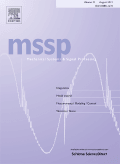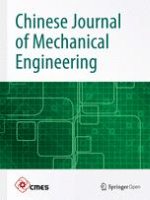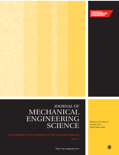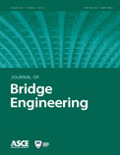
Journal of Vibroengineering
Scope & Guideline
Pioneering research in vibrational phenomena.
Introduction
Aims and Scopes
- Vibration Analysis and Modeling:
Research focusing on the mathematical and computational modeling of vibration phenomena in various systems, including mechanical, civil, and aerospace engineering. - Fault Diagnosis and Monitoring:
Studies aimed at developing techniques for the early detection and diagnosis of faults in machinery and structures based on vibration data. - Control Systems and Optimization:
Innovations in control strategies aimed at mitigating vibrations in mechanical systems, enhancing performance, and improving safety. - Material and Structural Dynamics:
Investigations into the dynamic behavior of materials and structures under various loading conditions, including seismic and operational loads. - Applications in Engineering and Technology:
Research that applies vibration engineering principles to practical applications in industries such as automotive, aerospace, civil, and manufacturing.
Trending and Emerging
- Machine Learning and AI in Vibration Analysis:
There is a growing trend in employing machine learning and artificial intelligence techniques for the analysis and diagnosis of vibration data, enhancing predictive maintenance and fault detection capabilities. - Smart Materials and Structures:
Research on the use of smart materials and adaptive structures that respond dynamically to environmental changes and operational conditions is gaining traction. - Hybrid and Multiscale Approaches:
The integration of hybrid modeling techniques that combine multiple scales and methods (e.g., numerical simulations with experimental validation) is becoming increasingly popular in vibration research. - Sustainability and Energy Efficiency:
Emerging studies focus on the role of vibration engineering in developing sustainable technologies and improving energy efficiency in mechanical systems. - Real-time Monitoring and IoT Applications:
The application of Internet of Things (IoT) technologies for real-time vibration monitoring and data acquisition is on the rise, enabling more responsive and adaptive engineering solutions.
Declining or Waning
- Traditional Mechanical Systems:
There has been a noticeable reduction in studies focusing solely on traditional mechanical systems and their vibration characteristics, as newer methodologies and technologies emerge. - Static Structural Analysis:
Research that primarily concentrates on static analysis without considering dynamic effects has become less frequent, indicating a shift towards dynamic and time-dependent analyses. - Basic Experimental Methods:
The reliance on basic experimental approaches for vibration analysis is waning, with a preference for more sophisticated and integrated methodologies that incorporate advanced data analytics and machine learning.
Similar Journals

Journal of Theoretical and Applied Mechanics
Driving Excellence in Mechanical Engineering and MathematicsJournal of Theoretical and Applied Mechanics, published by the Polish Society of Theoretical and Applied Mechanics, stands as a leading platform for disseminating cutting-edge research in the realms of theoretical and applied mechanics. With its ISSN 1429-2955 and E-ISSN 1429-2955, this Open Access journal has been fostering academic dialogue since 2006, making knowledge readily accessible to researchers and practitioners alike. Based in Warsaw, Poland, the journal encompasses a wide breadth of topics within mechanics, appealing to a diverse readership including researchers, professionals, and students. The journal's current Scopus ranking places it within the 30th percentile of the field, emphasizing its relevance and contribution to the discipline. As it converges from 2007 to 2024, the Journal of Theoretical and Applied Mechanics is pivotal for those seeking to advance understanding and innovation in mechanical engineering and mathematics, making it an essential resource for anyone involved in these critical areas of study.

Mechanical Sciences
Innovating solutions for a dynamic engineering landscape.Mechanical Sciences is a prominent open-access journal published by COPERNICUS GESELLSCHAFT MBH since 2010, dedicated to advancing the field of mechanical engineering and its multidisciplinary applications. Operating from Göttingen, Germany, the journal has established a vital platform for researchers and professionals alike, facilitating the sharing of original research, reviews, and innovative methodologies across various domains, including civil and structural engineering, control and systems engineering, fluid flow, industrial engineering, and mechanics of materials. With a current impact factor placing it in the Q3 category across several engineering disciplines, Mechanical Sciences provides a valuable resource that not only highlights emerging trends but also contributes to the ongoing discourse within the engineering community. The journal's commitment to open access ensures that its content is widely accessible, encouraging collaboration and knowledge sharing among students, educators, and industry experts worldwide. As it continues to converge towards 2024, Mechanical Sciences remains an essential reference for anyone invested in the mechanics of engineering and related fields.

International Journal of Mechanics and Materials in Design
Fostering Innovation in Design through Rigorous ResearchInternational Journal of Mechanics and Materials in Design is a leading publication in the field of mechanical engineering and materials science, published by Springer Heidelberg. With an impressive impact factor, it holds esteemed rankings as Q1 in both Mechanical Engineering and Mechanics of Materials, and Q2 in Materials Science for the year 2023, solidifying its reputation as a significant contributor to the advancement of design methodologies. The journal focuses on the intersection of mechanics and materials, encouraging innovative research that addresses contemporary challenges faced in engineering disciplines. Researchers and professionals alike can benefit from accessing cutting-edge studies contributing to various applications, making it an invaluable resource for staying informed in this dynamic field. While the journal operates under a subscription model, its comprehensive reviews and high-quality original research foster a deeper understanding of material behavior and design principles, thus supporting the academic growth and professional development of its readers.

Journal of Vibration Engineering & Technologies
Elevating Standards in Vibration Engineering ResearchJournal of Vibration Engineering & Technologies, published by Springer Heidelberg in Switzerland, is a premier open-access journal dedicated to the expansive field of vibration engineering, focusing on both acoustics and mechanical engineering. With its ISSN 2523-3920 and E-ISSN 2523-3939, the journal has gained significant recognition, achieving a prestigious Q2 ranking in both Acoustics and Ultrasonics and Mechanical Engineering in the 2023 category quartiles. In just a decade since its inception in 2014, it has established a solid foothold in the academic community, as indicated by its Scopus ranks, placing it among the top journals in acoustics (Rank #17/44, 62nd percentile) and in mechanical engineering (Rank #269/672, 60th percentile). The journal aims to disseminate cutting-edge research that advances the understanding and applications of vibration technologies, fostering dialogue among researchers, educators, and industry professionals. As an essential resource for those in academia and industry alike, the Journal of Vibration Engineering & Technologies invites contributions that challenge existing paradigms and propel innovation in the field.

MECHANICAL SYSTEMS AND SIGNAL PROCESSING
Pioneering methodologies that redefine engineering excellence.MECHANICAL SYSTEMS AND SIGNAL PROCESSING, published by Academic Press Ltd - Elsevier Science Ltd, is a leading journal that bridges multiple critical fields, including Aerospace Engineering, Civil and Structural Engineering, Computer Science Applications, Control and Systems Engineering, Mechanical Engineering, and Signal Processing. Established in 1987, this esteemed journal serves as an invaluable resource for researchers, professionals, and students seeking to advance the understanding of mechanical systems and their intimate relationship with signal processing techniques. With an impressive impact factor and consistently ranked in the Q1 category across various engineering and computer science disciplines, it offers rigorous peer-reviewed articles that contribute significantly to innovation and methodological advancements in the field. Although it does not currently offer Open Access options, its publication in the United States ensures a wide dissemination of high-quality research that shapes the future of engineering. The journal's convergence until 2025 promises to foster enduring discussions and collaborations that will continue to push the boundaries of technology and engineering applications.

JOURNAL OF SOUND AND VIBRATION
Advancing knowledge in sound and vibration.The JOURNAL OF SOUND AND VIBRATION, published by Academic Press Ltd - Elsevier Science Ltd, stands as a pivotal platform in the fields of Acoustics and Ultrasonics, Mechanical Engineering, and Mechanics of Materials. Since its inception in 1964, the journal has served as a beacon for researchers and practitioners looking to share and advance their knowledge on sound and vibration phenomena. With an impressive Q1 ranking in multiple categories and a Scopus ranking placing it in the top 10% of significant journals in related fields, it offers a high-impact venue for disseminating innovative research. The journal's well-rounded scope intersects fundamental and applied science, ensuring it remains relevant to a diverse audience, including students and professionals aiming to deepen their understanding of dynamic mechanical systems. Although primarily subscription-based, the journal's commitment to academic excellence makes it a valuable resource for all involved in the study and application of sound and vibration research, contributing significantly to advancements across engineering and physics disciplines.

Chinese Journal of Mechanical Engineering
Exploring the Future of Mechanical Engineering TogetherChinese Journal of Mechanical Engineering, published by SPRINGER, is a premier open-access platform dedicated to advancing the field of mechanical engineering. With a publication history dating back to 1990 and earning a distinguished Q1 ranking in both Industrial and Manufacturing Engineering and Mechanical Engineering as of 2023, this journal is essential for researchers and professionals eager to disseminate and access high-quality research. Featuring a robust impact factor and a Scopus ranking that places it in the top 18% of mechanical engineering journals, it serves as a significant resource for innovative findings and practical applications in engineering. Benefiting from its open-access status since 2018, the journal ensures wide accessibility to its content, fostering collaboration and knowledge sharing within the global mechanical engineering community. Researchers, students, and industry professionals will find a wealth of insightful articles that address contemporary challenges and explore future advancements within the discipline.

PROCEEDINGS OF THE INSTITUTION OF MECHANICAL ENGINEERS PART C-JOURNAL OF MECHANICAL ENGINEERING SCIENCE
Unveiling the science behind mechanical engineering advancements.PROCEEDINGS OF THE INSTITUTION OF MECHANICAL ENGINEERS PART C - JOURNAL OF MECHANICAL ENGINEERING SCIENCE, published by SAGE Publications Ltd, stands as a pivotal resource in the field of mechanical engineering, encompassing a wide array of topics from advanced materials to fluid dynamics and system design. With an impact factor reflective of its esteemed reputation, as indicated by its Q2 ranking in the Mechanical Engineering category, this journal serves as a vital forum for researchers, practitioners, and students alike. The journal boasts a rich history, converging research from 1983 to 2024, showcasing innovations and advancements that shape the mechanical engineering landscape. Although it is not an open-access publication, the insights and studies published herein provide invaluable contributions to the engineering community, fostering knowledge exchange and collaborative advancements. Researchers seeking a platform for their pioneering work will find Part C an ideal venue to disseminate their findings and engage with peers in this dynamic field.

Journal of Bridge Engineering
Innovating Structural Design for TomorrowThe Journal of Bridge Engineering, published by the ASCE - American Society of Civil Engineers, is a premier academic journal dedicated to the specialized field of bridge engineering and structural design. With a strong commitment to advancing knowledge from 1996 to 2024, this journal is recognized for its excellence, holding a prestigious Q1 ranking in both the Building and Construction and Civil and Structural Engineering categories according to the latest 2023 metrics. The journal's ISSN 1084-0702 and E-ISSN 1943-5592 signify its commitment to scholarly communication in a digital age. While it does not currently follow an open access model, the Journal of Bridge Engineering significantly impacts the engineering community, appealing to researchers, professionals, and students who seek cutting-edge research and innovative practices in bridge engineering. Its current rankings on Scopus place it among the top journals in its field, reinforcing its role as a critical resource for advancing the state of the art in bridge design, maintenance, and sustainability.

JOURNAL OF VIBRATION AND ACOUSTICS-TRANSACTIONS OF THE ASME
Pioneering Research in Vibration and AcousticsThe JOURNAL OF VIBRATION AND ACOUSTICS-TRANSACTIONS OF THE ASME is a leading publication in the field of vibration and acoustics, committed to advancing knowledge and understanding in these vital areas of mechanical engineering. Published by the esteemed American Society of Mechanical Engineers (ASME), this journal has a strong presence in both the academic and professional communities, evidenced by its impressive Scopus rankings, which place it in the top quartiles of Acoustics and Ultrasonics (Q1), Mechanical Engineering (Q2), and Mechanics of Materials (Q2) as of 2023. The journal features original research articles, technical papers, and case studies that offer breakthrough insights and innovative methodologies, fostering a rich dialogue among scholars, researchers, and industry professionals. With its convergence of knowledge spanning from 1983 to 2024, it remains a crucial resource for those looking to stay at the forefront of research in vibration and acoustics. Although not currently open access, its rigorous peer-review process ensures high-quality content that is essential for practitioners and researchers alike.